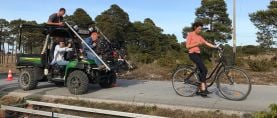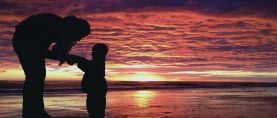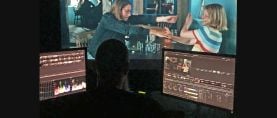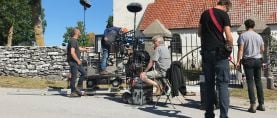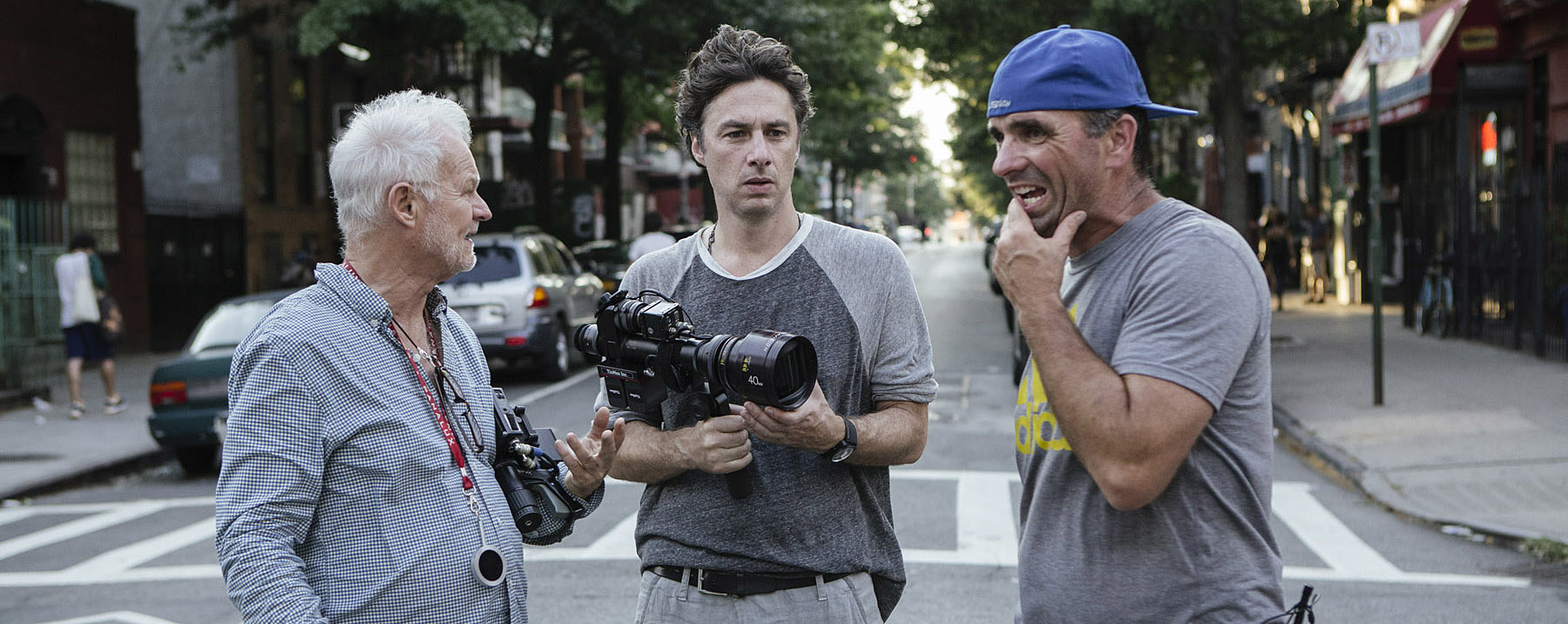
Filmmaker’s Forum: Switching in Style Between TV and Features
The opportunity to shoot the feature Going in Style came my way serendipitously after a number of years of shooting drama for television. The project is a remake of director Martin Brest’s 1979 feature of the same name, but unlike the original, ours would have a happy ending...
By Rodney Charters, ASC, CSC, NZCS
The opportunity to shoot the feature Going in Style came my way serendipitously after a number of years of shooting drama for television. The project is a remake of director Martin Brest’s 1979 feature of the same name, but unlike the original, ours would have a happy ending, with a contemporary script written by Theodore Melfi that was both timely and moving.
Director and actor Zach Braff and I had done two television pilots together over the years, and when he asked me to do a small, four-day drama shoot for MTV, I was excited to renew our working friendship. The shoot passed effortlessly, and at the end of it, Zach told me, “If I work, you work.” On that lovely note we parted company.
A few months later he called and told me he was short-listed as director of a Warner Bros. comedy, Going in Style, and he wanted me to shoot it for him. Two weeks after that he called and said, “I got it! And here’s our cast: Michael Caine, Morgan Freeman, Alan Arkin and Ann-Margret!”

I’ve had a great career, but I’ve predominantly worked in television, and the prospect of doing a feature with such legends filled me with anticipation. It would be an opportunity to apply the skills I’d honed in tightly scheduled episodic productions to a movie’s higher budget and more generous number of days.
Of course, the budget did not turn out to be quite so generous, and our scheduled days were dense with expectations. Most challenging was the knowledge that everyone would have to deliver exceptional work within tight, non-negotiable time frames, as our stars were almost all in their 70s and 80s and we would not be allowed any overtime. My own responsibility was to see that Zach had a generous amount of blocking and rehearsal time in order to make the most of his opportunity to work with such an exceptional group of actors. In other words, I had to light fast.
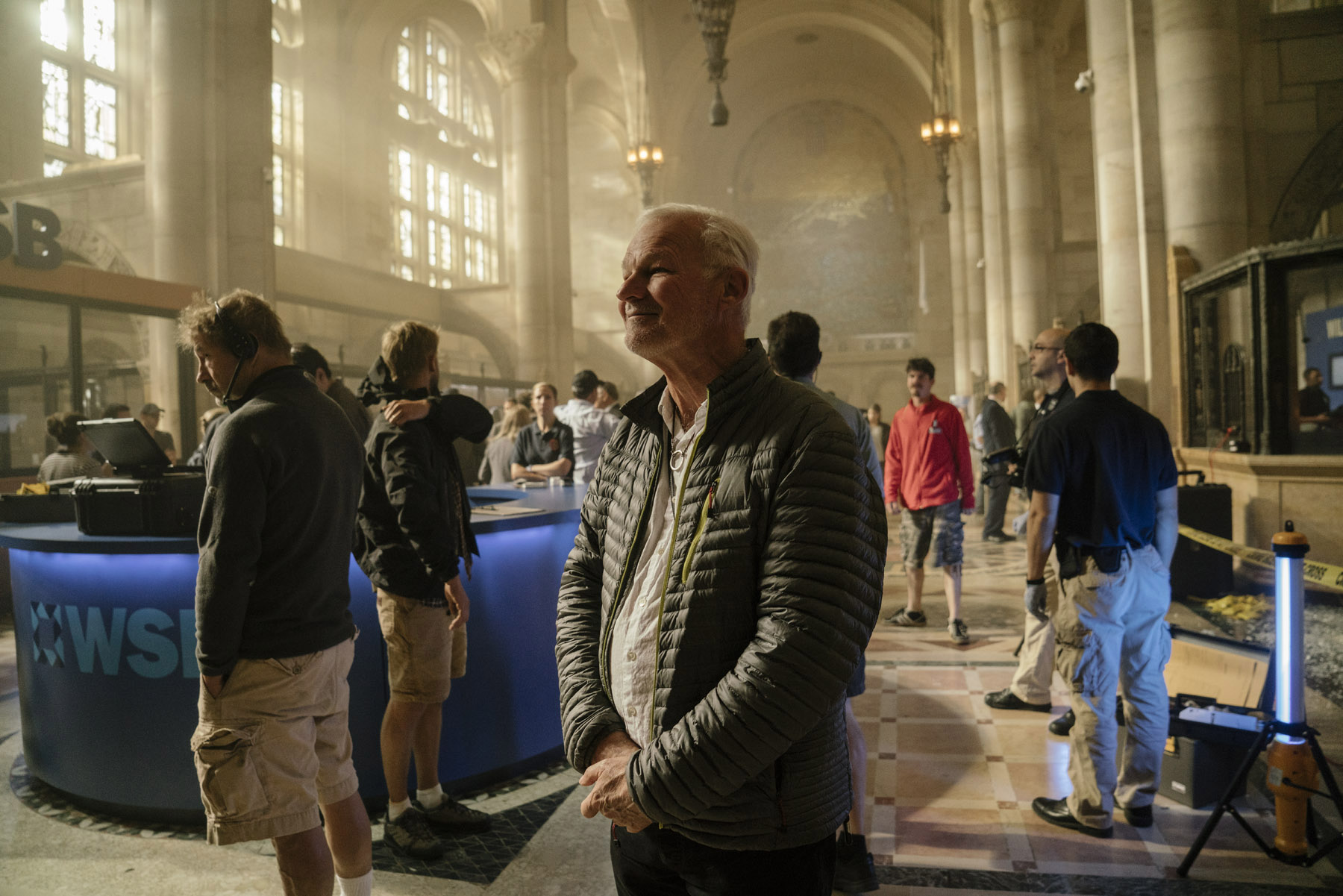
Zach moved to New York to begin prep, and I flew in for a two-day scout and to meet with producer Donald De Line and our brilliant production designer, Anne Ross. I then flew to New Zealand to shoot the final episodes of season one of The Shannara Chronicles for MTV. For that project, as on most of my recent shoots, I was using a set of Panavision G, C and E anamorphic lenses. Currently almost all broadcasters crop 16:9 images out of the 2.39:1 unsqueezed file, but eventually many more shows will just go to air in widescreen. Hands up: Who hasn’t seen a car commercial broadcast in 2.39?
Zach and I absolutely adore the look of anamorphic lenses, and for Going in Style we chose to work with the G, C and E Series lenses, as well as a 150mm T Series lens, pairing them with Arri’s Alexa XT Plus camera. (We also used spherical Zeiss Super Speed lenses with an Alexa Mini camera, which could not yet accommodate Open Gate mode.) We are both in love with anamorphic’s magical depth of field, the way it defines where you want the audience to look, and the painterly bokeh at the edges of the frame.
Having chosen Panavision New York as our rental house, the rest of the personnel began to fall into place. Sal Giarratano, Panavision New York’s senior marketing rep, suggested legendary 1st AC Bobby Mancuso, who was working on Teenage Mutant Ninja Turtles: Out of the Shadows with the only available set of lenses, which we would need to secure; that night, Bobby and I met in downtown Manhattan and became firm friends. Bobby brought his whole camera team to Going in Style, and I added two imports: my longtime A-camera/Steadicam operator Michael Alba, and my daughter May, who worked as my assistant.
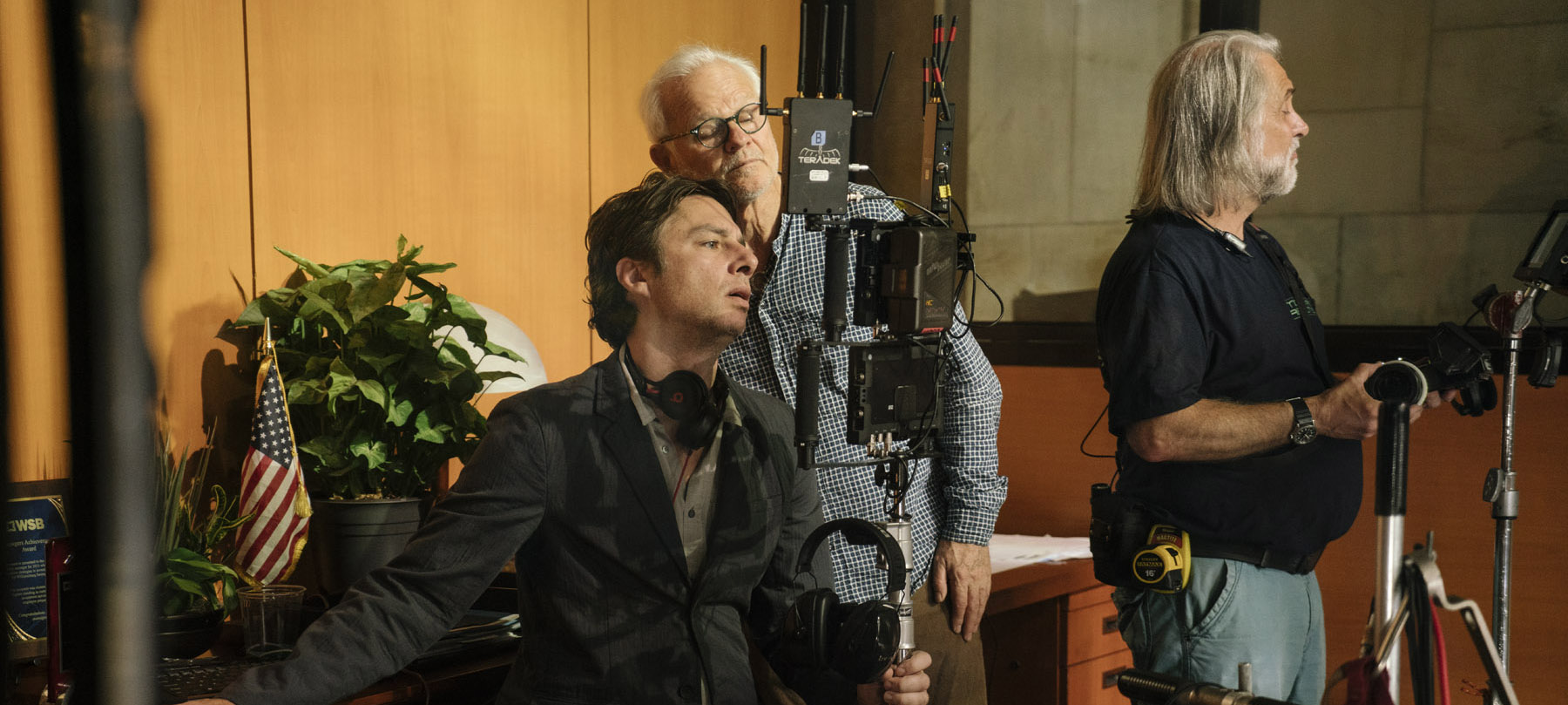
I also sought help from my friends in New York, including ASC members Ellen Kuras and Stuart Dryburgh, a fellow Kiwi. At their suggestion, I interviewed and hired Andrew Day as my gaffer and Richard Guinness Jr. as my key grip. My team had all grown up in New York’s non-union independent-feature scene, and they knew how to work lean. Across the departments, I dare say, we had the best team in New York City.
The art department — where Anne Ross was assisted by art director Laura Ballinger and set decorator Sara Parks — was under great pressure to reduce the cost of our sets. Working together, we shared images, scouted, discussed palette and texture, shot tests, and Instagrammed our way through a lovely prep. Anne’s sets were so lovingly lived-in, and there was no waste on this shoot.
Our biggest set, the Williamsburgh Savings Bank Tower in Brooklyn, was a huge cathedral-like structure with three 50'-high stained-glass windows. This is the bank that Morgan, Michael and Alan’s characters decide to rob. At the location, we elected to use three 45' scissor lifts with three ArriMaxes on each. However, even with 162,000 watts of HMI, we were barely able to keep up with the sun as we tried to penetrate the warm, golden, leaded stained glass. When the sun shifted behind the building, we added a couple of large helium balloons to maintain a sense of bright daylight, and when we needed shafts of light, we added a 10K MoleBeam. We used a Freefly Movi M15 with an Alexa Mini on a cable rig to travel the length of the bank down to our heroes at the front door.
Ritchie Guinness was a prince. He managed to secure me a 32' Louma 2 for most of the days when we needed a telescoping crane. This superb tool allowed us to do perfect tangential moves using its automatic controls. Our first crane shot involved Michael Caine walking off the stoop of Morgan Freeman’s house on 14th Place in Astoria, across the road and up the steps to his own house on the other side of the road, with the Robert F. Kennedy Bridge lit up in the background. Michael sold the pain of old age, making the scene hard to watch.
We went into overtime only once. We had lit up the fountain at City Hall Park, and the three leads allowed us 30 extra minutes before their agents would have gotten on the phone to Warner Bros. It was a frantic scramble, but we finished the scene in the time allowed.
We chose to tow the getaway car, which was a wheelchair pickup vehicle and would have required an absolutely giant insert truck. After the first day on the road, though, with the temperature above 100 degrees, we elected to finish all the driving work on a greenscreen stage. My son Robin then came in to work on the stabilized 360-degree plates.
Andrew Day was into Lowel’s Rifa soft lights with tungsten bulbs, and I was grateful for their pure color temperature. I had been using first-generation LEDs for some time, and it was reassuring on Going in Style to find the skin tones perfectly rendered.
Bobby and I tested a whole bunch of diffusion and effects filters and finally settled on a Tiffen Soft/FX ½ behind the lens, taking advantage of the Alexa’s internal filter module. I shot the whole movie with that filter in place; it rounded and delicately bloomed the highlights. Occasionally I put an additional ½ on the front of the lens.
Zach and I shared a memorable eight hours, spanning day and night, doing helicopter work over Manhattan, Brooklyn and Queens. Al Cerullo piloted the N355AG TwinStar helicopter, and we shot with an Arri M — with the recorder in the cockpit so we could change cards — on a Shotover F1 six-axis gyro-stabilized platform and fitted with an Angenieux Optimo Style 25-250mm (T3.5) zoom.
We shot ArriRaw, and Myron Kerstein edited on an Avid using DNx 175 files. It was satisfying to be able to project DNx 175 at the test screenings and during the final mix; they looked amazing on the 40' screen. But how much better they looked in the raw file!
My three weeks of color timing at FotoKem ended up being four weeks due to footage traveling back and forth between final color and the visual-effects house, Shade VFX, which performed complex work. This extra time was a luxury that TV rarely affords. Colorist Kostas Theodosiou and I spent quality time exploring the challenge of having Michael Caine and Morgan Freeman sharing the same frame. Kostas worked in Blackmagic Design DaVinci Resolve and used power windows to track faces whenever necessary.
Back in prep, when I had attended the read-through and met the cast, I could hardly contain my excitement. Just to be in the room with Michael Caine, Morgan Freeman, Alan Arkin and Ann-Margret, and to know that in a week I would be helping them find their best light — it doesn’t get any better. It was at that first meeting with the cast that Ann-Margret came to me and said, “So, you’re the cinematographer.” She took my finger and pressed it just beneath her left eye. “I had a fall,” she said, “and I’ve never felt that the bones completely settled here underneath my eye. Please help me with this.”
“Of course,” I answered. “I will do everything I can to make it disappear.”
As I looked around the room I was reminded of how vulnerable all actors are in different ways, and how much trust they place in all the heads of department — including wardrobe, makeup, hair, and the cinematographer — to take good care of them. So finally, when all the technology is taken care of, my main concern is how to foster and maintain a sense of tranquility and camaraderie on the set so that, guided by the director, they are free to create great performances.
During production, we were shooting in a supermarket, and I needed to close the gap between Michael and Morgan at a checkout counter. I asked Zach if I could ask Morgan to adjust his position a few inches, and then I asked Morgan, “Mr. Freeman, sir, could you land a few inches closer to Mr. Caine?” Looking down at me with his dark, soulful eyes, he demanded, “What’s in it for me?” I froze, my mind frantic. But then, remembering his generous greetings each morning, I ventured, “How about a hug?” A huge smile broke his stern countenance, and we hugged warmly — and, of course, he moved closer on the next take.
It went on like that for 40 days. Everyone agrees we made a great movie. Ann-Margret left me a voicemail that made me blush. Michael Caine said in his departure speech that it was the nicest working experience he had ever had, which made the crew very happy. Indeed, Going in Style stands out as one of the high points of my career. It was both an extraordinary creative experience as a cinematographer and one of the loveliest summers of my life. Time and cost can certainly be our adversaries in this business, but this production proved the adage that time stays long enough for the one who will use it.

